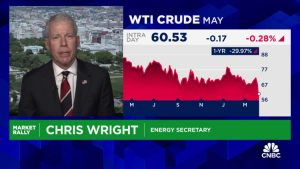Barclays (LSE: BARC) shares have been a long-term disappointment. Viewed over a 15-year timeframe, they’ve destroyed shareholder wealth. But in a rising interest rate environment, bank stocks are once again looking like an increasingly attractive proposition. So, would I invest today?
Banking crisis 2.0?
The collapse of a number of US and European banks has stoked fears of another financial crisis. However, parallels with 2008 may have been overdone.
The global financial crisis was largely a credit event. The banking industry made bad loans that subsequently defaulted. Today, the issue is totally different.
Banks’ balance sheets are much more heavily weighted toward long-duration, safe securities such as US Treasuries. Most of these were purchased at high prices and low yields. This was not a problem as long as interest rates remained low.
The unprecedented rate hikes witnessed in 2022 pushed yields on 10-year Treasury bonds up. Consequently, the price of the bonds fell heavily.
In the case of well-capitalised banks, like Barclays, that is not a problem. Holding to maturity means it will get its money bank.
Silicon Valley Bank was not so fortunate. Poor risk management, meant that a disproportionate number of depositors were uninsured. The subsequent run on the bank meant it was forced to sell its Treasury holdings, realising large losses.
Diversified bank
One of the main attractions of Barclays for me is its diversified business model. This is in complete contrast to many of its rivals, particularly Lloyds.
In 2022, all three of its operating divisions saw double-digit returns on tangible equity. Its UK retail banking operations delivered net interest income of 3.2%, on the back of rising interest rates.
Strong growth in consumer cards and payments in both the US and UK, drove a 46% growth in income, year on year.
In complete contrast to 2021, falling stock prices, together with subdued mergers and acquisitions (M&A) activity, hit revenues in investment banking. Nevertheless, it has seen 114bps of revenue share gain since 2019.
Would I buy Barclays?
Any investment in Barclays is predicated on where I believe the likely trajectory of the economy is heading.
At the moment the economy seems to be rebounding. Unemployment is low and inflation is expected to start falling. However, the number of job openings both here and in the US is pushing up wage demands. If a wage price spiral becomes entrenched in the economy, we could see a repeat of the similar situation in the 1970s.
One sector that is particularly sensitive to high interest rates is the tech sector. And this matters to Barclays.
Its investment banking arm relies heavily on a steady flow of IPO and M&A activity. However, if interest rates remain elevated for any length of time, such work is likely to dry up. After all, it’s much more difficult for unprofitable startups to raise capital in the stock market in such an environment.
If we do go into a full-blown recession, the Barclays share price could nosedive. Even if I’m wrong, I still believe there are better opportunities elsewhere at the moment.
This post was originally published on Motley Fool




